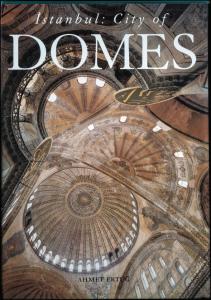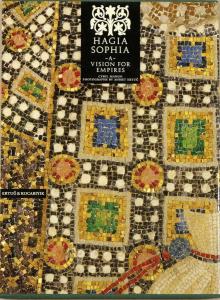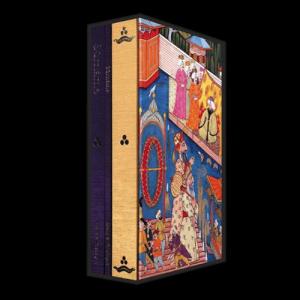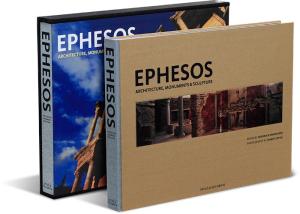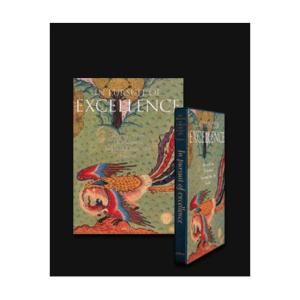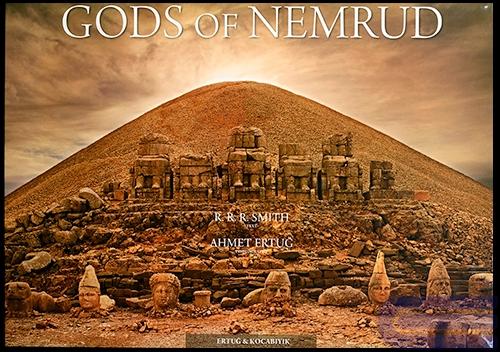
Kommagene Krallığı'nın MÖ 1. yüzyıl döneminden son derece zengin bir arkeolojik malzeme günümüze ulaşabilmiştir. I. Antiochos'un hüküm sürdüğü bu döneme ait bulgular antik dönemde din ve sanatla ilgili çalışmalar için son derece değerli veriler sağlar. Bu malzemelerin arasında anıtsal heykeller, büstler, rölyefler ve kral ile onun tanrıları hakkında çok miktarda yazıt yer alır. Anıtlar hem sayıca hayli fazladır hem de tarihlenip tanımlanmış olmaları itibarıyla büyük önem taşırlar.
Metinler ve imgeler eski bir kültürün tarihi ve köklerine inmek açısından bulunmaz bir fırsat sunar. Kommagene Kralı I. Antichos (MÖ 69–36 civarı) Suriye ile Doğu Anandolu'da Helenistik monarşinin sonlarına ve Roma hükümranlığının başlangıcına denk gelir. R.R.R. Smith'in yazdığı akademik metin Antiochos'un krallığının coğrafi ve siyasi tarihini aydınlatırken, yazıtlardan öğrenilebildiği kadarıyla tapınakları ve inançlarını da irdeliyor. Ahmet Ertuğ'un muhteşem fotoğrafları Nemrut Dağı ve Arsameia'nın en iyi korunmuş heykellerini tüm güzelliğiyle gözler önüne sererken, bu sıradışı anıtların özgün karakteri ve yarattığı etkiyi yeni bir bakışla ele alıyor.
Antiochos'un krallığı Fırat tarafında Zeugma'ya kadar uzanıyordu ve bu zengin Roma sınır kentinin izleyen dönem tarihi ve arkeolojisi de kitapta yer alıyor. 1990'lardaki kurtarma kazılarında Zeugma'daki evlerde ortaya çıkarılan inanılmaz güzellikteki büyük mozaikler, mitoloji, alegori, fantastik deniz öykülerinin tasvirleriyle Helenistik yer mozaikleri geleneğini sürdürüyor ve geç Helenistik dönem ile geç Antik dönem arasında MS 2. yüzyılın mozaik resimlerindeki eksik halkayı tamamlıyor. Son derece kaliteli bir baskıya sahip kitapta yer alan fotoğraflar okuyucuyu Doğu ile Batı arasında bir köprünün üstüne kurulmuş antik bir dünyanın pek de bilinmedik ve muhteşem bir yüzüyle tanışıtırıracak.
A unique complex of archaeological material survives from Commagene in the first century BC. It derives from a local king, Antiochos I, and is of great interest in itself and for the study of ancient religion and art. The material consists of a large body of monumental sculpture, statues and reliefs and voluminous inscriptions about the king and his gods. The monuments are unique in their quantity, and in being precisely dated and identified. Together the texts and images provide an unrivalled opportunity for getting close to the quality and texture of an ancient cult. Antiochos I of Commagene (c. 69-36 BC) belonged at the tail-end of Hellenistic monarchy and the beginning of Roman rule in Syria and Eastern Anatolia. The scholarly text by R.R.R. Smith describes the geography and political history of Antiochos kingdom, and looks at the archaeology of his sanctuaries and his royal cult as known from inscriptions. Exquisite photography by Ahmet Ertug concentrates on some of the best preserved sculpture from two sites, Nemrud Dag and Arsameia and expresses in a new way the distinctive character and impact of these extraordinary monuments. Antiochos' kingdom extended to Zeugma on the Euphrates and the later history and archaeology of this prosperous Roman border city are also included in the book. The large picture mosaics discovered in the Zeugma houses during the rescue excavations of the 1990s are sensational. They continue the tradition of Hellenistic mosaic floors with pictorial scenes of mythology, allegory, and marine fantasy, and constitute a missing link in the second century AD between picture mosaics of the later Hellenistic period and of Late Antiquity. The photography of Ahmet Ertug in this beautifully printed book will bring readers into a spectacular and less familiar landscape of the ancient world, one that felt itself already in Antiquity to be perched at the bridgehead between West and East.
The photographs in the book were printed with special inks, and all color-separation and proofing was done at the digital darkroom of Ahmet Ertug.
The book is 34 x 47cms in landscape format, and has 196 pages, 95 color plates and 37 figures.
Printed in Germany, hardbound in Switzerland with exquisite cloth, presented in slipcase.
Kommagene Krallığı'nın MÖ 1. yüzyıl döneminden son derece zengin bir arkeolojik malzeme günümüze ulaşabilmiştir. I. Antiochos'un hüküm sürdüğü bu döneme ait bulgular antik dönemde din ve sanatla ilgili çalışmalar için son derece değerli veriler sağlar. Bu malzemelerin arasında anıtsal heykeller, büstler, rölyefler ve kral ile onun tanrıları hakkında çok miktarda yazıt yer alır. Anıtlar hem sayıca hayli fazladır hem de tarihlenip tanımlanmış olmaları itibarıyla büyük önem taşırlar.
Metinler ve imgeler eski bir kültürün tarihi ve köklerine inmek açısından bulunmaz bir fırsat sunar. Kommagene Kralı I. Antichos (MÖ 69–36 civarı) Suriye ile Doğu Anandolu'da Helenistik monarşinin sonlarına ve Roma hükümranlığının başlangıcına denk gelir. R.R.R. Smith'in yazdığı akademik metin Antiochos'un krallığının coğrafi ve siyasi tarihini aydınlatırken, yazıtlardan öğrenilebildiği kadarıyla tapınakları ve inançlarını da irdeliyor. Ahmet Ertuğ'un muhteşem fotoğrafları Nemrut Dağı ve Arsameia'nın en iyi korunmuş heykellerini tüm güzelliğiyle gözler önüne sererken, bu sıradışı anıtların özgün karakteri ve yarattığı etkiyi yeni bir bakışla ele alıyor.
Antiochos'un krallığı Fırat tarafında Zeugma'ya kadar uzanıyordu ve bu zengin Roma sınır kentinin izleyen dönem tarihi ve arkeolojisi de kitapta yer alıyor. 1990'lardaki kurtarma kazılarında Zeugma'daki evlerde ortaya çıkarılan inanılmaz güzellikteki büyük mozaikler, mitoloji, alegori, fantastik deniz öykülerinin tasvirleriyle Helenistik yer mozaikleri geleneğini sürdürüyor ve geç Helenistik dönem ile geç Antik dönem arasında MS 2. yüzyılın mozaik resimlerindeki eksik halkayı tamamlıyor. Son derece kaliteli bir baskıya sahip kitapta yer alan fotoğraflar okuyucuyu Doğu ile Batı arasında bir köprünün üstüne kurulmuş antik bir dünyanın pek de bilinmedik ve muhteşem bir yüzüyle tanışıtırıracak.
A unique complex of archaeological material survives from Commagene in the first century BC. It derives from a local king, Antiochos I, and is of great interest in itself and for the study of ancient religion and art. The material consists of a large body of monumental sculpture, statues and reliefs and voluminous inscriptions about the king and his gods. The monuments are unique in their quantity, and in being precisely dated and identified. Together the texts and images provide an unrivalled opportunity for getting close to the quality and texture of an ancient cult. Antiochos I of Commagene (c. 69-36 BC) belonged at the tail-end of Hellenistic monarchy and the beginning of Roman rule in Syria and Eastern Anatolia. The scholarly text by R.R.R. Smith describes the geography and political history of Antiochos kingdom, and looks at the archaeology of his sanctuaries and his royal cult as known from inscriptions. Exquisite photography by Ahmet Ertug concentrates on some of the best preserved sculpture from two sites, Nemrud Dag and Arsameia and expresses in a new way the distinctive character and impact of these extraordinary monuments. Antiochos' kingdom extended to Zeugma on the Euphrates and the later history and archaeology of this prosperous Roman border city are also included in the book. The large picture mosaics discovered in the Zeugma houses during the rescue excavations of the 1990s are sensational. They continue the tradition of Hellenistic mosaic floors with pictorial scenes of mythology, allegory, and marine fantasy, and constitute a missing link in the second century AD between picture mosaics of the later Hellenistic period and of Late Antiquity. The photography of Ahmet Ertug in this beautifully printed book will bring readers into a spectacular and less familiar landscape of the ancient world, one that felt itself already in Antiquity to be perched at the bridgehead between West and East.
The photographs in the book were printed with special inks, and all color-separation and proofing was done at the digital darkroom of Ahmet Ertug.
The book is 34 x 47cms in landscape format, and has 196 pages, 95 color plates and 37 figures.
Printed in Germany, hardbound in Switzerland with exquisite cloth, presented in slipcase.




